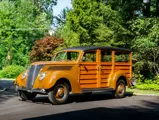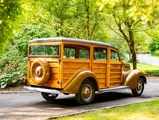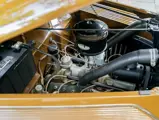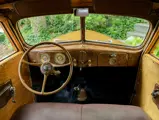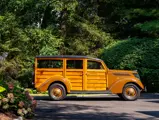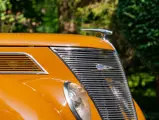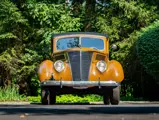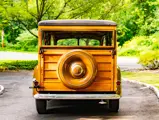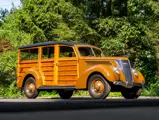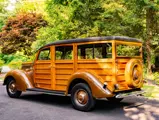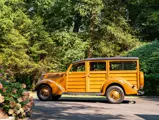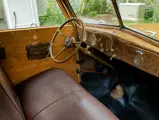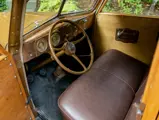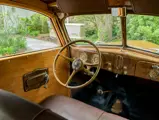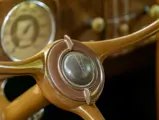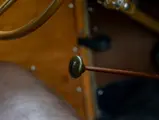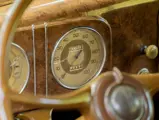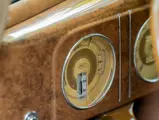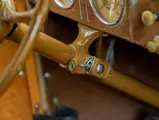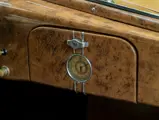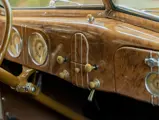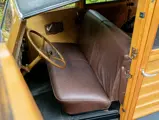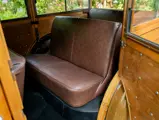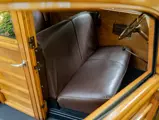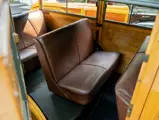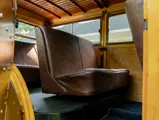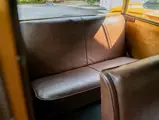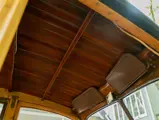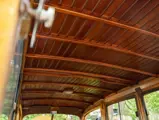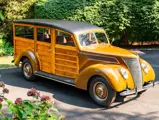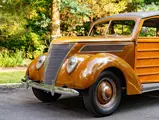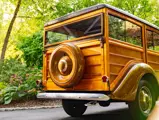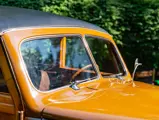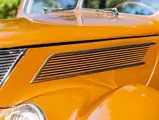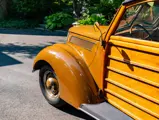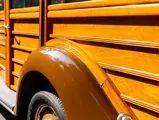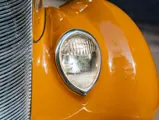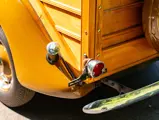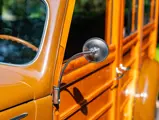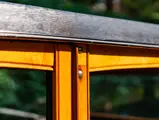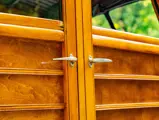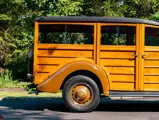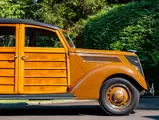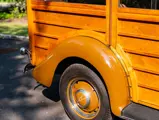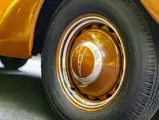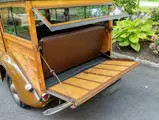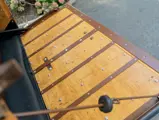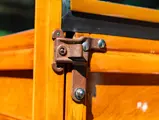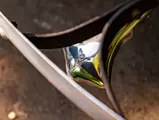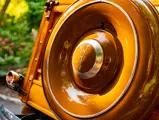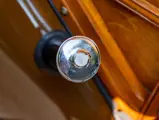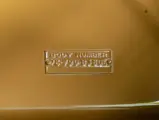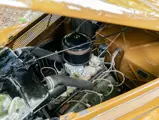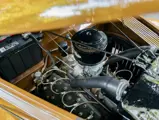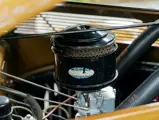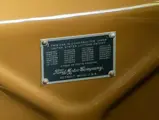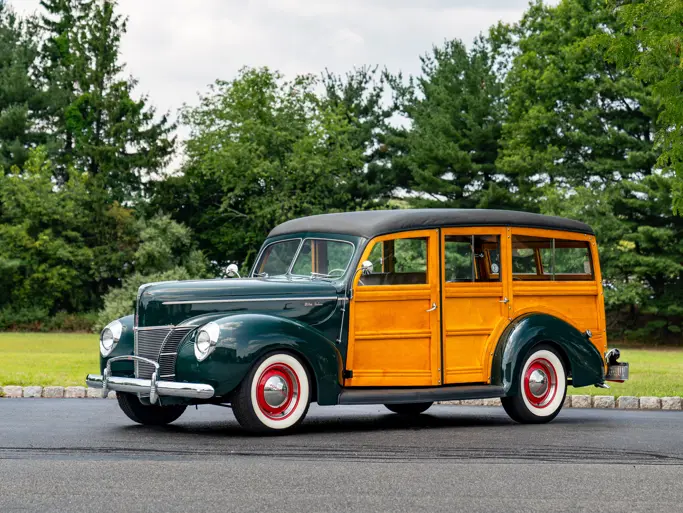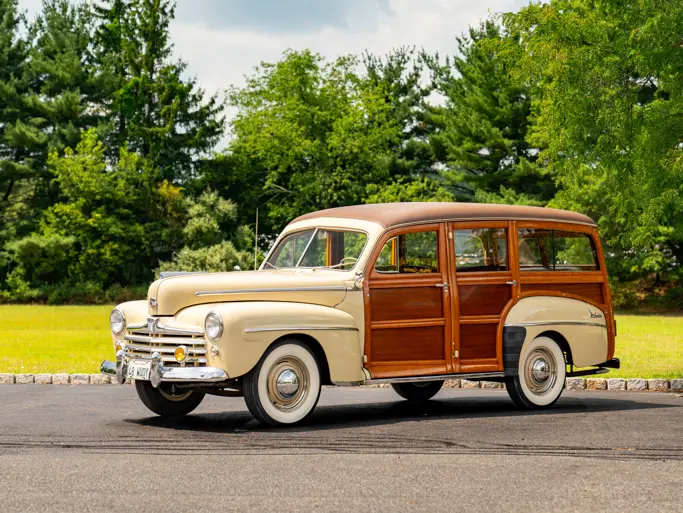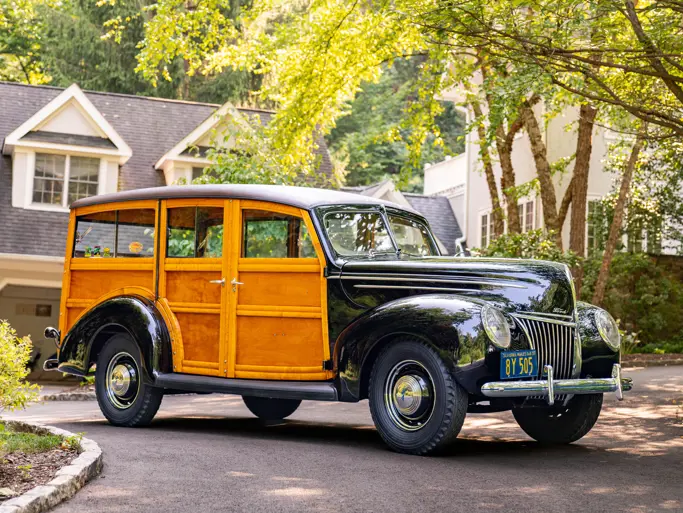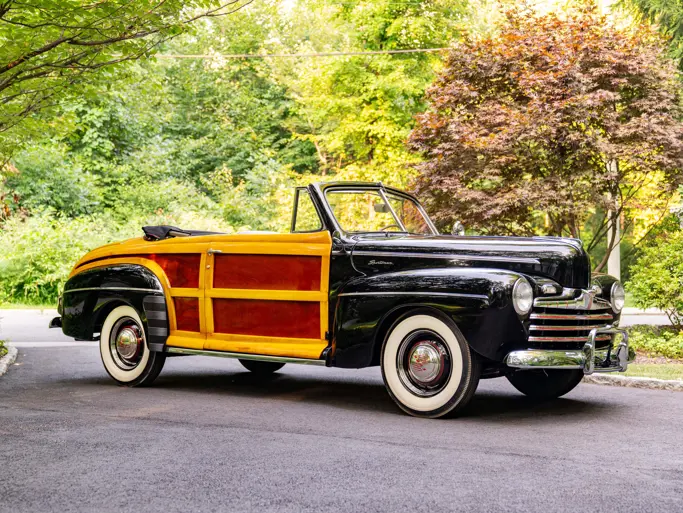Hershey 2024
1937 Ford DeLuxe Station Wagon
The Sportsman Collection
{{lr.item.text}}
$30,000 - $40,000 USD | Offered Without Reserve
 | Hershey, Pennsylvania
| Hershey, Pennsylvania
{{internetCurrentBid}}
{{internetTimeLeft}}

- A well-preserved original with an older repaint
- One of 9,304 produced for 1937
- Equipped with the 85-hp Ford flathead V-8
Ford offered totally new styling for 1937 models introduced in early November of 1936. While the look was definitely Ford, the streamlined styling was strikingly new. Deluxe models, like the example offered here, included dual horns, chrome windshield moldings and grille, along with dual, rather than single, windshield wipers. Two V-8 engines were available: a new 60-horsepower unit for those who preferred economy to performance, and the more popular 85-horsepower version of Ford’s ubiquitous flathead. Total Ford production for 1937 tallied 929,390, good enough for second place in sales behind rival Chevrolet.
Ford classed the Station Wagon as part of its commercial line, although it used the Deluxe trim level of corresponding coupes and sedans, which Ford cleverly deemed Tudors and Fodors. Despite new styling, wagons used the rear fenders of the 1935–1936 models. Ford shipped pre-cut wood components from its Iron Mountain plant to Murray’s Detroit facility where wagons were trimmed and final assembly completed. A total of 9,304 were produced for the 1937 model year. All cars featured an interior of artificial brown leather and an exterior color of Autumn Brown or Sand Beige. Any commercial color could be ordered at extra cost, though standard passenger-car colors were not available on wagons.
For the first time, wagons offered optional sliding glass in the rear door and rear quarter windows. For an extra $20, the glass panels replaced the side curtains that normally provided weather protection for all but the front windows. Two engines were offered—the economy V-8 with 60 horsepower and the standard 85-horsepower 221-cubic-inch unit—both mated to a 3-speed manual transmission. Only 193 of the wagons built used the less powerful engine.
Finished in brown over a matching interior, this woodie appears to be a well-preserved original with one older repaint and minor cosmetic work. Originally manufactured in May 1937, it is equipped with the larger V-8 engine and includes features such as a third-row seat, tailgate-mounted spare tire with locking metal cover, locking glove box, driver’s side outside mirror, and blackwall tires highlighted by wheels with stainless steel trim rings.

